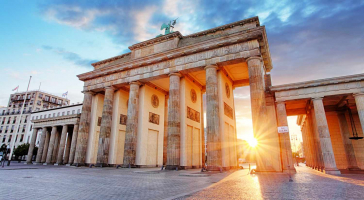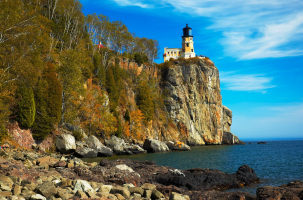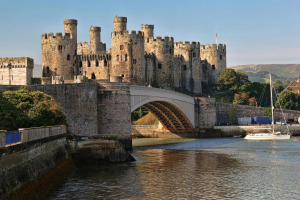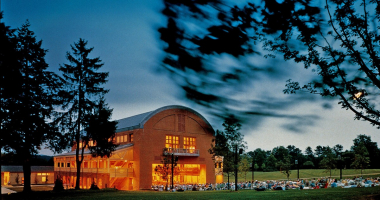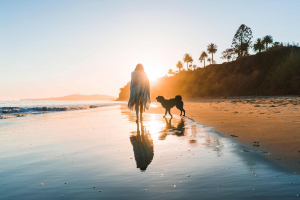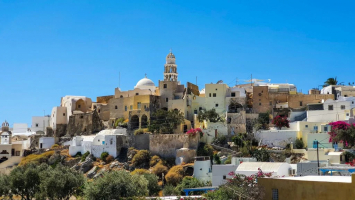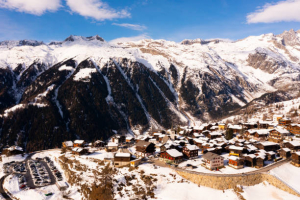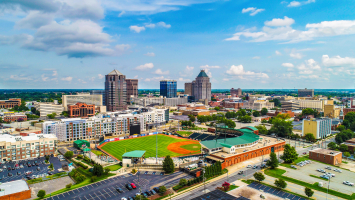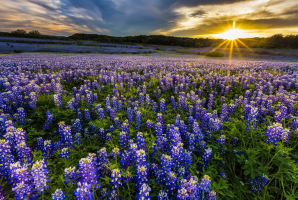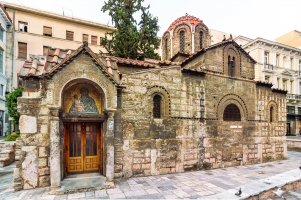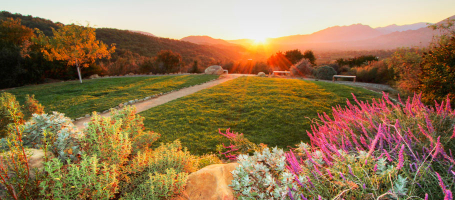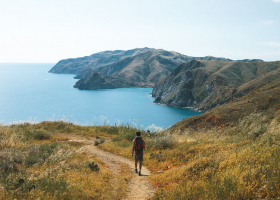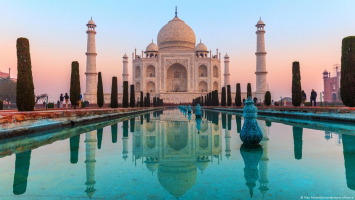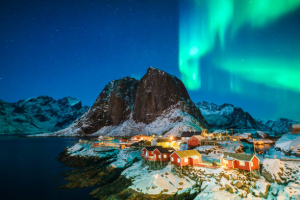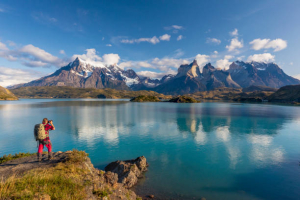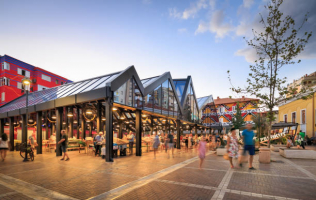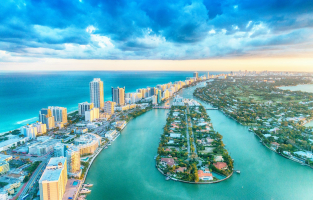Top 11 Best Things To Do In Romania
Located in the southeastern corner of Europe, on the shores of the Black Sea, Romania has so far significantly missed out on the global tourism boom. Much of ... read more...the rest of the country, with its beautiful mountains and river valleys, rustic villages, and vibrant cities, has recently begun to attract visitors. This place has so many unique attractions and places to visit that visitors won't know where to start. Explore the list of best things to do in Romania to see the unique and interesting places of this place.
-
Once a refuge for Ceauşescu and visiting dignitaries, Peleș Castle remains the country’s most opulent palace. Set in a large English-style park, the castle outwardly resembles a Bavarian Schloss, and visiting it is one of the best things to do in Romania. Built in 1875–83 for Carol I, and largely decorated by his eccentric wife Elisabeta, it contains 160 rooms. These rooms are richly done out in ebony, mother of pearl, walnut, and leather – all totally alien to traditional styles of Romanian art. Visitors to Peleș Castle also get to enjoy thousands of fascinating artifacts in the castle's armory dating back to the 15th century.
Peleș Castle definitely wins the prize for the most beautiful fortress in Romania, becoming one of the best things to do in Romania. Peleș Castle was built in the late 19th century to serve as the summer residence for Romania's royal family of German descent. This explains the neo-Renaissance architecture the castle was built in with lovely stained glass windows. Considered an engineering masterpiece for its time with modern amenities such as floor heating, the entire castle is impressive and well-preserved both outside and inside. There are 160 rooms in total for guests to explore over 2 floors, many of which have priceless works of art by painters as famous as Gustav Klimt. Visiting Peles Castle is one of the best things to do in Romania if you’re curious about Romanian history.
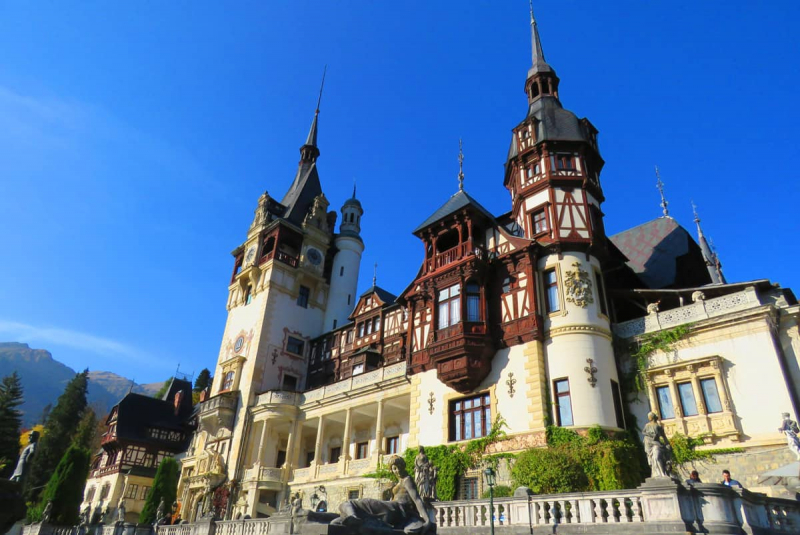
Source: travelmakertours.com 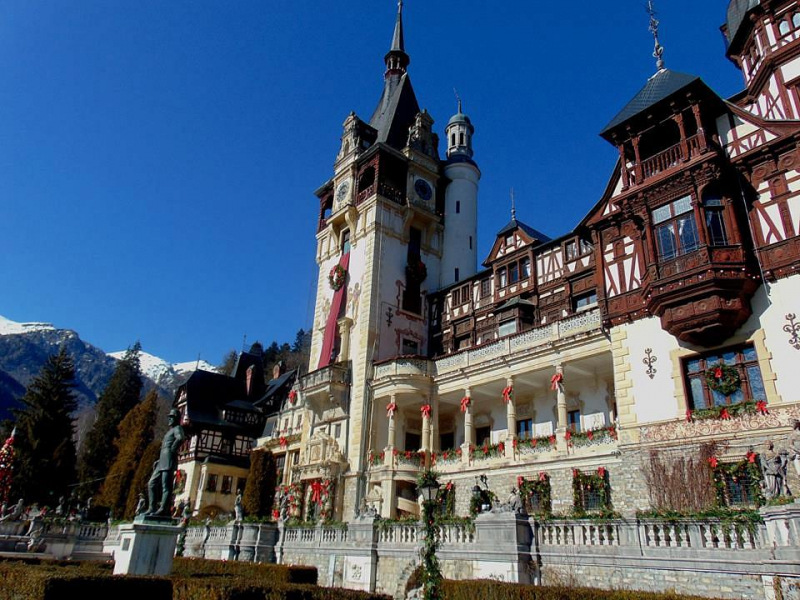
Source: romania-insider.com -
Bucharest is Romania’s noisy, chaotic capital boasting a number of terrific museums, remarkable architecture, and arguably the best nightlife in the Balkans. The first point of arrival for many visitors is the capital, and also the best things to do in Romania, Bucharest. While not an easy city to love – its wide nineteenth-century Parisian-style boulevards are choked with traffic, once-grand fin de siècle buildings crumbling and the suburbs dominated by grim apartment blocks – its cultural institutions, abundant greenery, and lively Old Town nightlife reward patience. In recent years, the gastronomic scene has improved beyond recognition, while a wave of artisan coffee joints has revitalized the city’s café culture.
Filled with touristic landmarks and places to discover, Bucharest is a must-visit for every traveler. Also, it`s the perfect city to take walking tours in. One of the best landmarks that you can visit in Bucharest is, by far, the Palace of the Parliament. This colossal construction was built during the communist regime of Nicolae Ceausescu. Today it is one of the largest buildings in the world. It’s fair to say that no trip to Romania is complete without at least one visit to its capital, Bucharest, a bustling city, filled with lots of things to do and awesome places to stay. There are numerous wineries you can visit close to Bucharest and scattered all over Transylvania. Some are housed in aristocratic 18th century villas overlooking the vineyards.
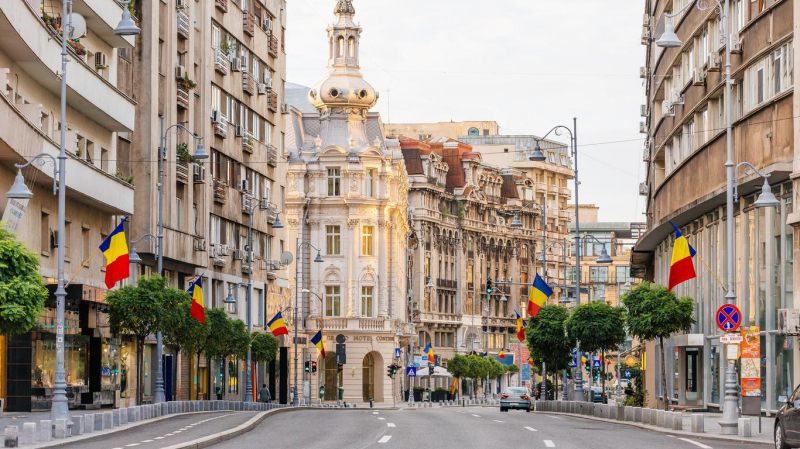
Source: curiouslyerin.com 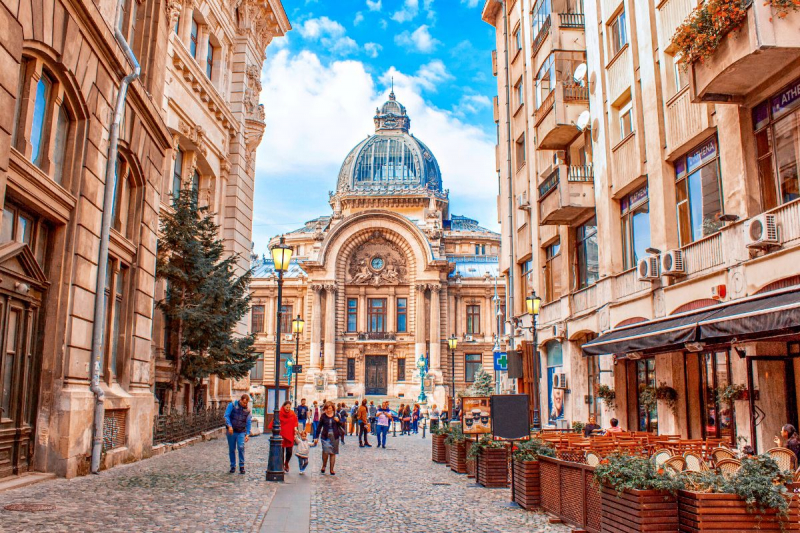
Source: ricksteves.com -
This remote and beautiful landscape is teeming with fabulous wildlife and promises some of the finest birdwatching in Europe. The Danube Delta is a paradise for wildlife, and after years of environmental neglect culminating in Ceauşescu’s plan to drain the Delta for agricultural use, it was declared a Biosphere Reserve in 1990, with over 500 square kilometers strictly protected, and a UNESCO World Heritage Site the following year. The area is particularly important for birds, which pass through during the spring and autumn migrations or come from Siberia to winter here or from Africa to breed in summer.
After meandering more than 2800km across the European continent, the powerful Danube River pours into the Black Sea in the northeastern corner of Romania. The Danube Delta is a vast protected wetland of water lilies and reeds, pushing up through the river’s countless tributaries. Known second-largest river delta in all of Europe, the Danube Delta is first and foremost home to hundreds of animals (including wild horses) and bird species, lush vegetation, and breathtaking river canals which you can explore on boat rides. Visit the Central Eco-Tourism Museum of the Danube Delta in the port of Tulcea to see the varied flora and fauna that call the delta home. Ibis Tours runs regular birding outings, with chances to glimpse species like the white-tailed eagle, bee-eater, great white egret, and roller. Therefore, boat or bird-watch on the Danube Delta is one of the best things to do in Romania.
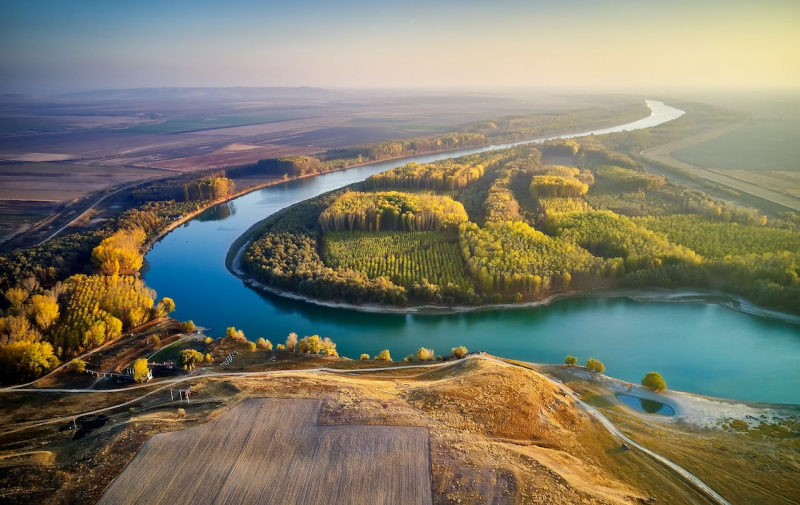
Source: matadornetwork.com 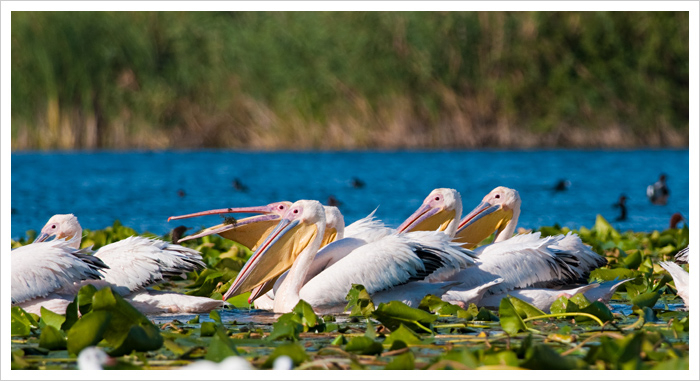
Source: romaniatourism.com -
Scattered among the lush hills of southern Transylvania are dozens of marvelous fortified Saxon churches. Prejmer (Tartlau), 7km east of Hărman has the most comprehensively fortified and perhaps the most spectacular of all the region’s churches – now on UNESCO’s World Heritage List. Access is through a 30m-long vaulted gallery with a sliding portcullis in the middle. Built-in 1225, the cross-shaped church was taken over by the Cistercians in 1240 and enlarged in their Burgundian early Gothic style. The nave has late Gothic vaulting, and there’s a fine Passion altarpiece (1450–60). There is also a small museum, boasting fine examples of Saxon costumes. Take a sightseeing tour of Romanian fortified churches is one of the best things to do in Romania.
Known as some of the most spectacular fortified churches in Europe, these sites were built by the Saxons who came from Germany to Transylvania. These churches are testaments to the rich, cultural heritage of the Saxons that came over from Germany to settle in Transylvania. There are over 150 fortified churches in Romania, many of which were built between the 13th and 16th centuries. Visit the meticulously preserved church of Biertan or the rare 15th-century murals in the church of Harman. The picturesque fortified church of Viscri is also another popular tourist destination.
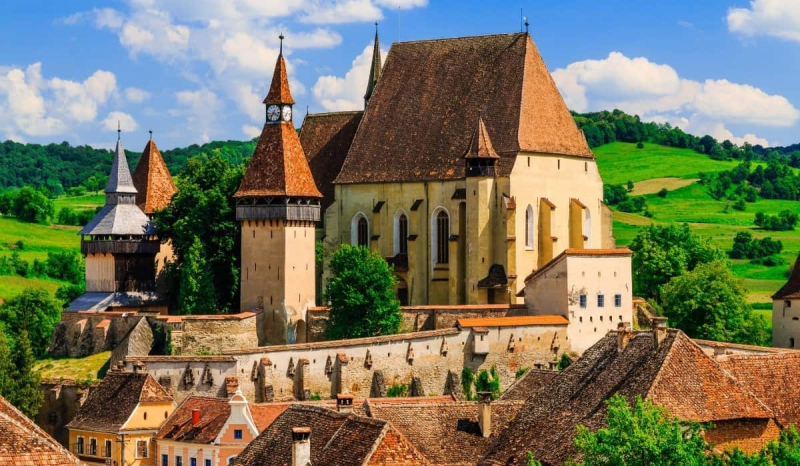
Source: travelingtransylvania.com 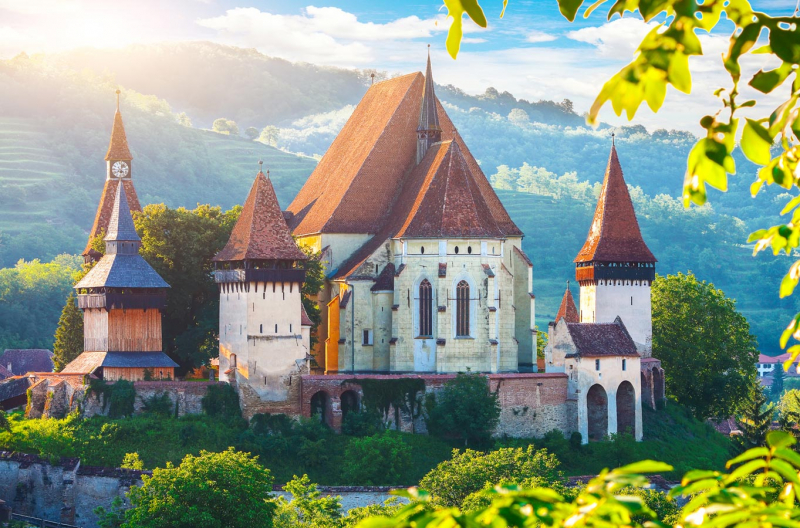
Source: crafted-tours-romania.com -
Hit the slopes in Poiana Braşov, or at one of the country’s other popular, good-value centers. Poiana Braşov sits at an altitude of 1000m on the shoulder of the spectacular Mount Postăvaru, 12km south of Braşov. Coming by car, it’s worth stopping at some great viewpoints over the city at km 4.5. This is Romania’s premier ski resort, and while it’s a great place to learn, with lots of English-speaking instructors, experienced skiers may soon be bored (although some slopes are steep and often icy). It’s crowded at weekends, and it’s no longer cheap, but there has been considerable investment in lifts and new pistes, as well as snow-making and grooming equipment so that the season can extend into late April.
Poiana Braşov is the ultimate holiday destination for most Romanians and international tourists. Set just a 20-minute drive away from Brasov Old Town, this place has everything you need if you’re coming to ski or snowboard from schools, equipment rental, and of course amazing slopes. Ski season usually opens in December and lasts until late February, but get ready because Poiana Braşov is usually packed with tourists. During the winter, it’s a popular destination for skiing, ice skating, and tubing. In the summer, the slopes are full of hikers, cyclists, and horseback riders. This is the best thing to do in Romania. The town is filled with bustling hotels, restaurants, and even nightclubs.
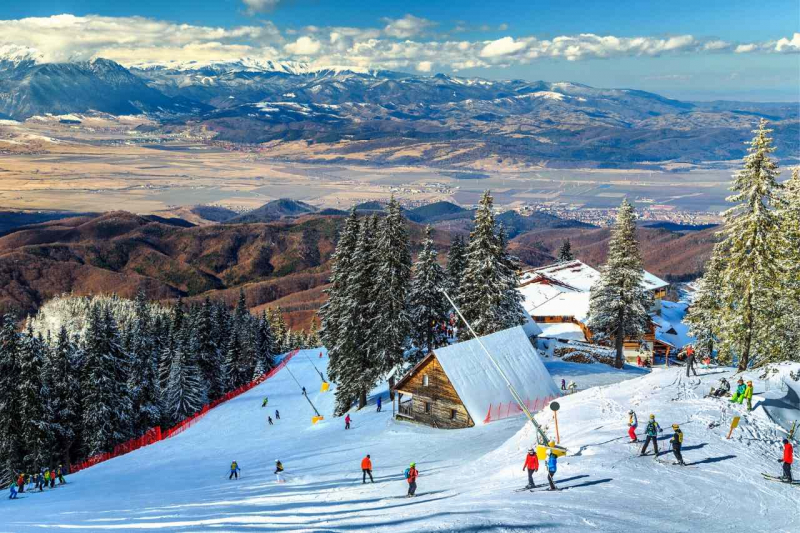
Source: snowboardguides.com 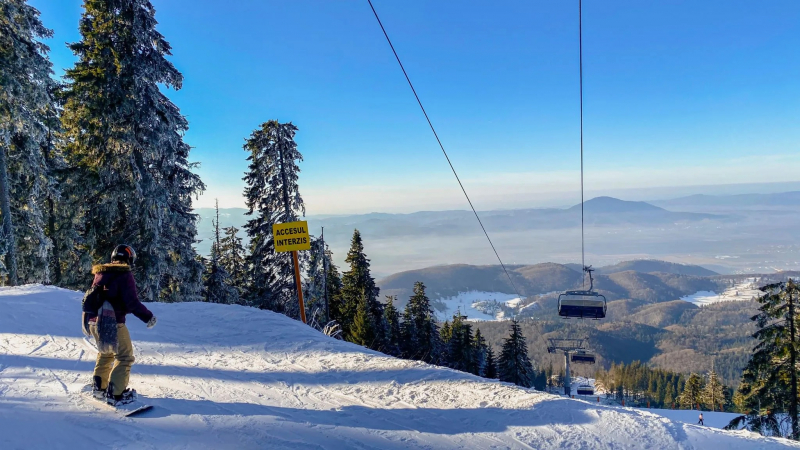
Source: romaniatourstore.com -
Beautiful architecture, terrific museums, and fabulous festivals make the once-great Saxon town of Sibiu one of the alluring things to do in Romania. Nowadays, the city is surrounded by high-rise suburbs and virtually abandoned by the Saxons themselves, but the Old Town’s brightly painted houses, with “eye” windows to ventilate their attic grain stores, are still startling. Sibiu has many fine old churches and some of Romania’s best museums, as well as the remains of the bastions and fortifications.
Nicknamed the “Little Vienna” of Romania, Sibiu is a quaint, colorful town lined with charming Baroque houses and Gothic buildings. In its center is the Big Square, a beautiful plaza that is dotted with hotels, shops, and restaurants. It’s been around for over 500 years and continues to be the center of daily life and the beating heart of the city. In the middle of the square, you’ll find a statue of St. John Nepomuk, the square’s main attraction. Grab some lunch or a cup of coffee and relax while admiring the view of one of Romania’s most beloved squares. One of the best things to do in Romania is to visit the famous city of Sibiu, home to the Brukenthal National Museum and Astra Museum of Traditional Folk and Civilisation. With significant Saxon influences, an aristocratic air to it, and a vibrant cultural scene.
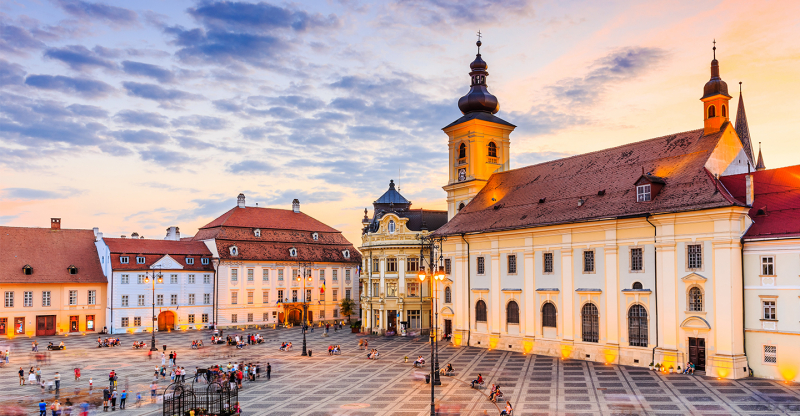
Source: getyourguide.fr 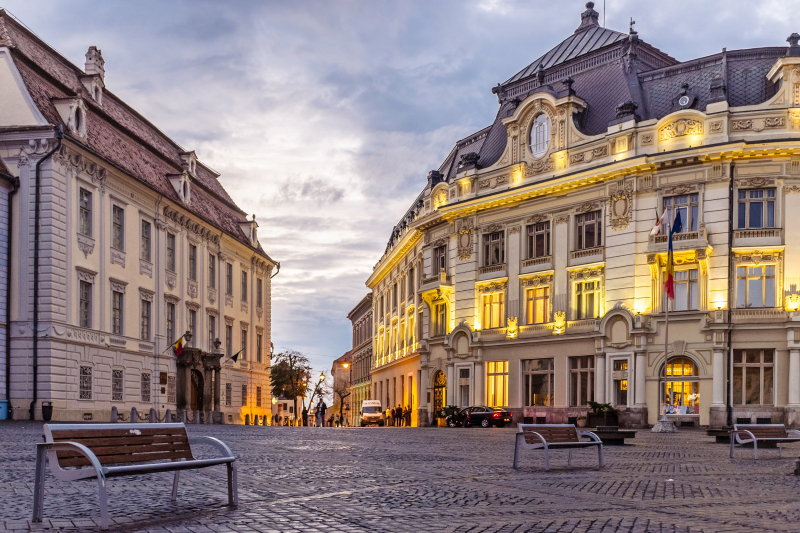
Source: europeanbestdestinations.com -
Cloaked in beech, fir, and pine, the gorgeous rolling Bucovina hills are a walker’s paradise. The painted monasteries of Bucovina, in the northwest corner of Moldavia, are rightfully acclaimed as masterpieces of art and architecture, steeped in history and perfectly in harmony with their surroundings. The monasteries are scattered across a region divided by rolling hills. Although settlers from Maramureş arrived here in the mid-fourteenth century, the area remained barely populated for two centuries until Huţul shepherds moved south from the Ukrainian mountains. The quality and style of these paintings are truly impressive considering how old they are. And because they're so well preserved with only minor works carried out over hundreds of years, religious people believe these churches have significant spiritual power and meaning.
The Unesco-protected, 15th-century painted monasteries of Bucovina show off not just Romania’s enduring devotion to its Latin-flavoured Orthodox tradition, but also superb artistry and craftsmanship. The elaborate frescoes adorning both the interiors and exteriors of the half-dozen or so churches were largely inspired by the Moldavian prince and hero, Stephen the Great. The frescoes illustrate everything from biblical stories to the 15th-century siege of Constantinople. The dizzying matrix of colors and intricate detail, like at the stunning Voroneţ Monastery, blends effortlessly with remote natural surroundings. This is one of the best things to do in Romania.
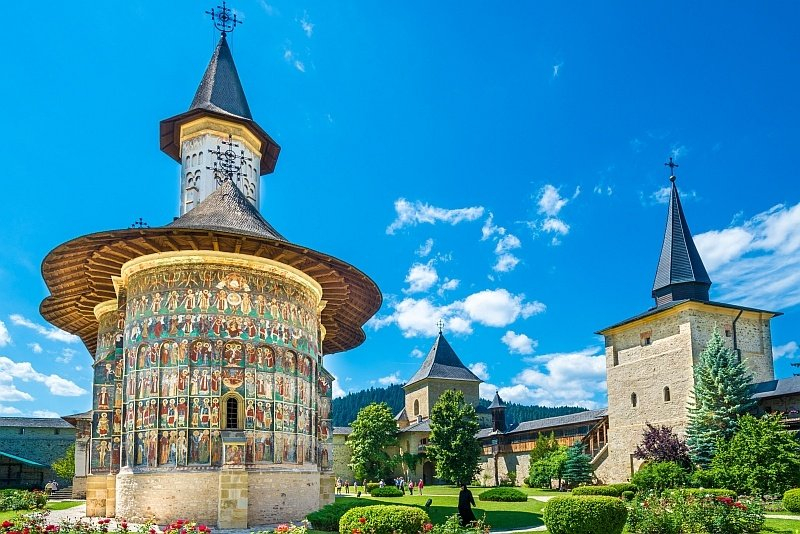
Source: visitromaniatoday.com 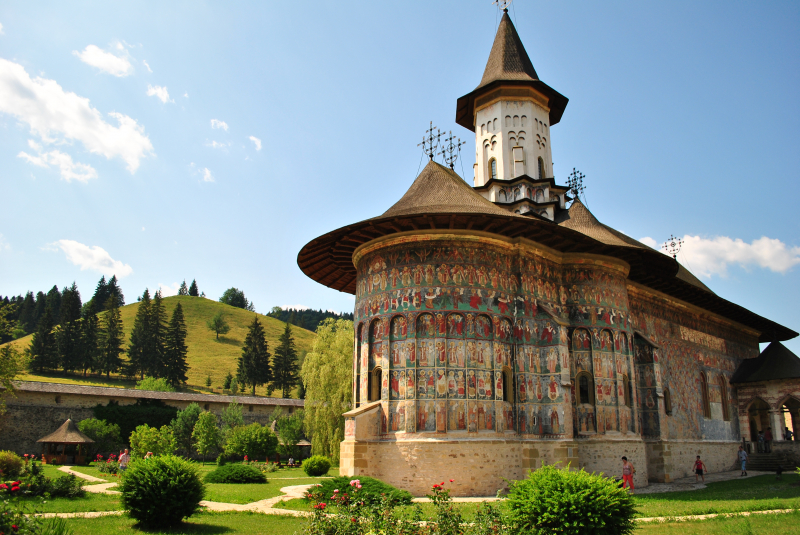
Source: expatcenter.ro -
The Piatra Craiului National Park is ideal for all kinds of outdoor pursuits, from observing animals in the wild to guided walks and sporting activities such as climbing and caving. These are organized by various local agencies, mostly members of the Association of Ecotourism in Romania dedicated to nature conservation and sustainable tourism development. Romania is known as Europe’s last wilderness reserve, and there are lots of guided tours that take you to see brown bears in their natural habitat. Alternatively, you can visit the Libearty Bear Sanctuary in Zarnesti, a village located in the Piatra Craiului Mountains, which are part of the Southern Carpathians mountains range. One of the best things to do in Romania is bear-watching - especially brown bears of which we have the largest population in Europe.
The most popular is bear-watching, which is now offered by dozens of companies, as well as some accommodation providers, though the following come highly recommended: Carpathian Nature Tours or Discover Romania. You’ll typically be taken up to a forest hide at dusk, and although patience is key (which is why it’s unsuitable for young children), there’s about an eighty percent chance of seeing a brown bear in its natural habitat. Discover the Romanian Carpathian where over 5500 bears roam, on a wildlife-watching adventure. Admire species like lynx, wolves, and bear from a special observation hide.
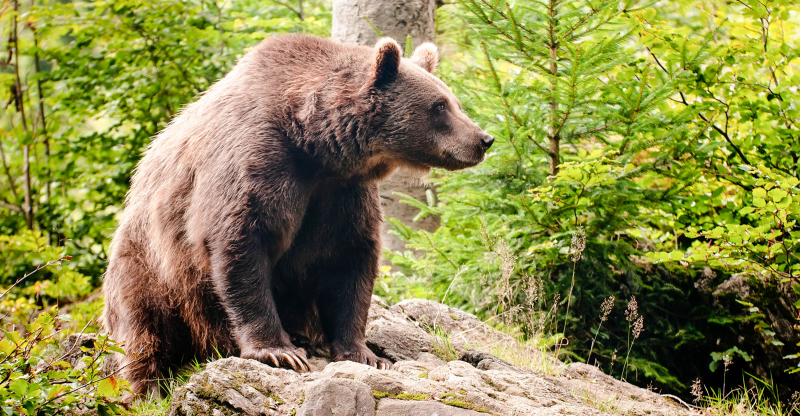
Source: muchbetteradventures.com 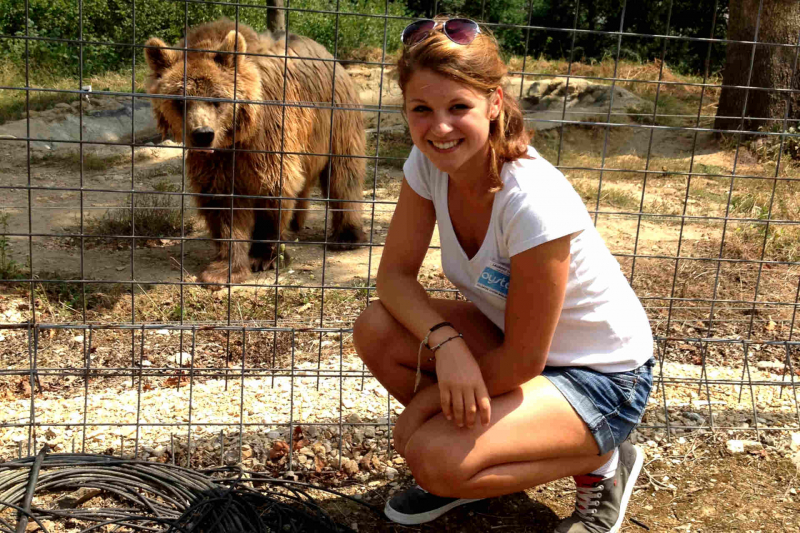
Source: romania-traveller.com -
The Merry Cemetery is a forest of beautifully worked, colorfully painted wooden grave markers carved with portraits of the deceased or scenes from their lives, inscribed with witty doggerel (in Romanian). Some are terse – “who sought money to amass, could not Death escape, alas!”. While a surprising number recall violent deaths, like that of the villager killed by a “bloody Hungarian” during World War II. Merry Cemetery is renowned for its colorful tombstones and poetic paintings, making it a popular attraction for those visiting Romania. The national tourist attraction is now considered an open-air museum and visitors are invited to see the beautiful tombstones and the thoughtful depictions of the people who were buried there. The epitaphs found in the cemetery are an attraction of their own and range in tone, with many being rather funny and amusing.
Located in Sapanta village, Maramures, just 4 hours' drive from Cluj Napoca, the Merry Cemetery is a national tourist attraction that is now considered an open-air museum and also a UNESCO World Heritage Site. Each tombstone at the Merry Cemetery is super colorful and it depicts different illustrations that show the life or character of the deceased person. The illustrations are accompanied by short amusing poems or pieces of text that add to the illustrations and offer the reader a useful life lesson but with a funny touch. One of the best things to do in Romania is to visit a cemetery with a happy and funny view of death: the Merry Cemetery in the village of Săpânța in the Maramures region.
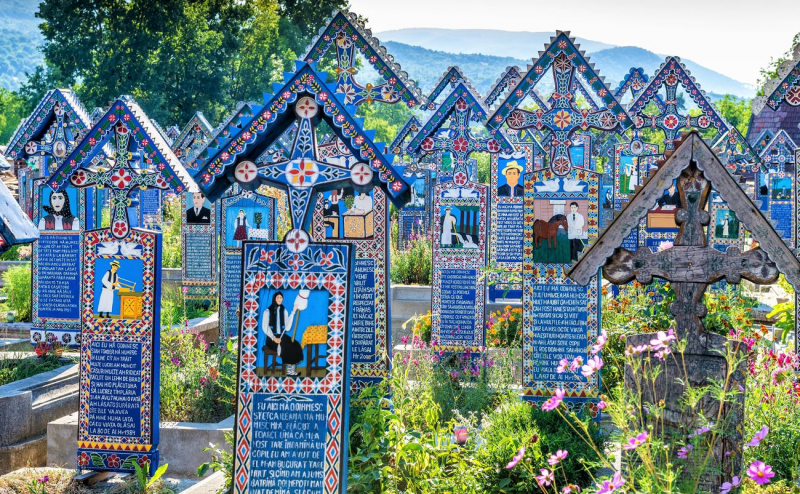
Source: matadornetwork.com 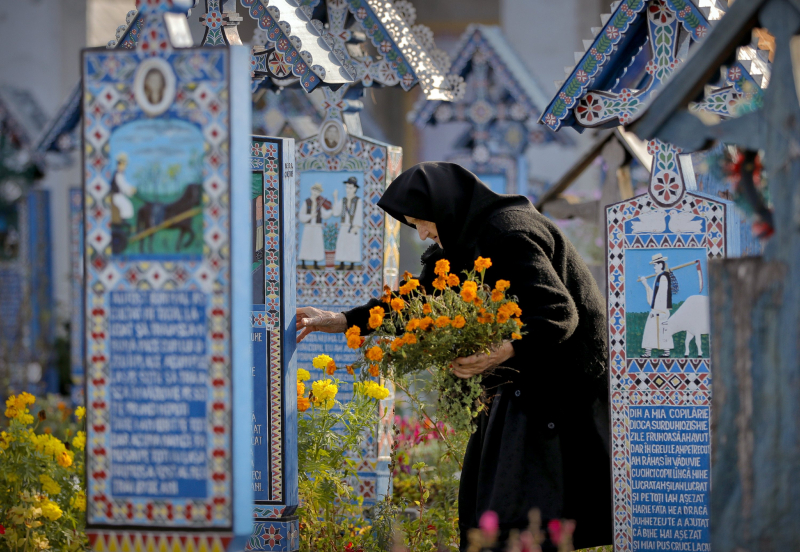
Source: crafted-tours-romania.com -
A swathe of wooden churches stretches across Eastern Europe, from northern Russia to the Adriatic, but in terms of both quality and quantity, the richest examples are in Maramureş. From 1278, the Orthodox Romanians were forbidden by their Catholic Hungarian overlords to build churches in stone and so used wood to ape Gothic developments. It was long thought that most were rebuilt after the last Tatar raid in 1717, acquiring large porches and tall towers, often with four corner pinnacles, mimicking the masonry architecture of the Transylvanian cities. However, in 1997 a tree-ring study showed that the wood used in many churches – notably those of Corneşti, Breb, and Onceşti.
A visit to Maramureş in far northern Romania, above Transylvania, is like a trip back to a simpler, more rustic, more rural past. Isolated villages, separated from one another by vast, rolling fields and forested hillsides, cluster around stark wooden churches with weather-beaten, Gothic-style steeples. The region is home to several Unesco-listed churches, including Bârsana, Budeşti, Deseşti, Ieud, and Surdeşti. Stay for the weekend to see the villagers don their traditional Sunday dress. The building of wooden churches began in the 16th century when the Catholic Austro-Hungarian authorities prohibited the construction of Orthodox stone churches in the area. Initially, there were over 300 wooden churches built in the region, but today only around 100 are left standing. This becomes one of the best things to do in Romania.
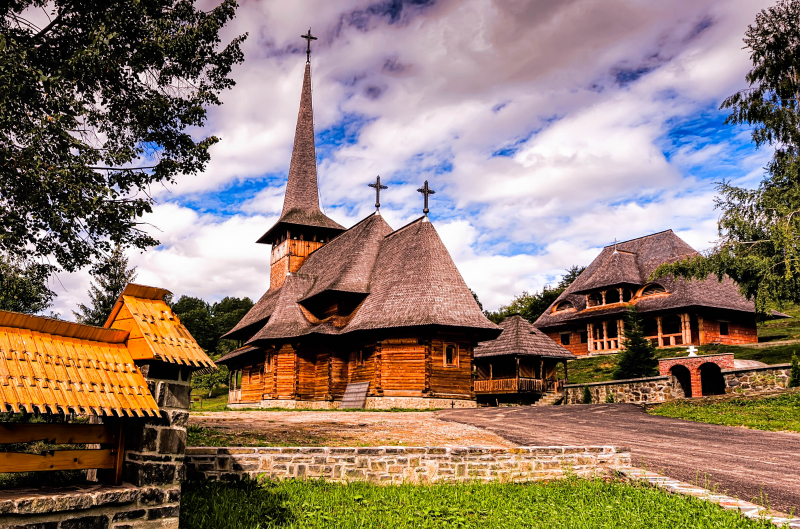
Source: rolandia.eu 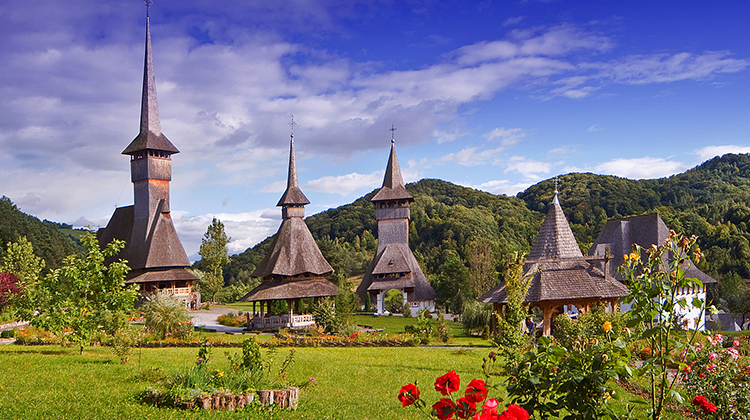
Source: worldwidetravel.tips -
Bran Castle is often associated in the public eye with Dracula, and this wouldn’t be an article on Romania without a nod toward the infamous count, but the only bloodthirsty nobleman who stayed here was probably Romania’s own Vlad Țepeș, a 15th Wallachian prince who was famed for spiking the heads of his Turkish adversaries. But Bran doesn’t need Dracula to induce awe. The castle’s enormous mass of turrets and castellations, all looking over a foggy, desolate mountain pass, pretty much recalls every horror film ever made.
A national monument and landmark in Romania, Bran Castle is a fortress that is one among many locations commonly known as “Dracula’s Castle.” It is considered one of the most beautiful medieval castles in Romania and currently houses a museum dedicated to the furniture and art collected by Queen Maria. In addition to that, visitors can also visit the open-air museum park on the castle grounds to see an interesting exhibit of traditional Romanian peasant structures, such as barns and cottages from villages across the country. There are many tours available, so visitors can truly explore the interior and exterior of Bran Castle and everything it holds. Bran Castle is arguably one of the most important landmarks and attractions, and also the best things to do in Romania – not just in Transylvania, but in all of Romania. It is often referred to as Dracula’s Castle, since it was believed to be one of the inspirations for Bram Stoker’s novel, Dracula.
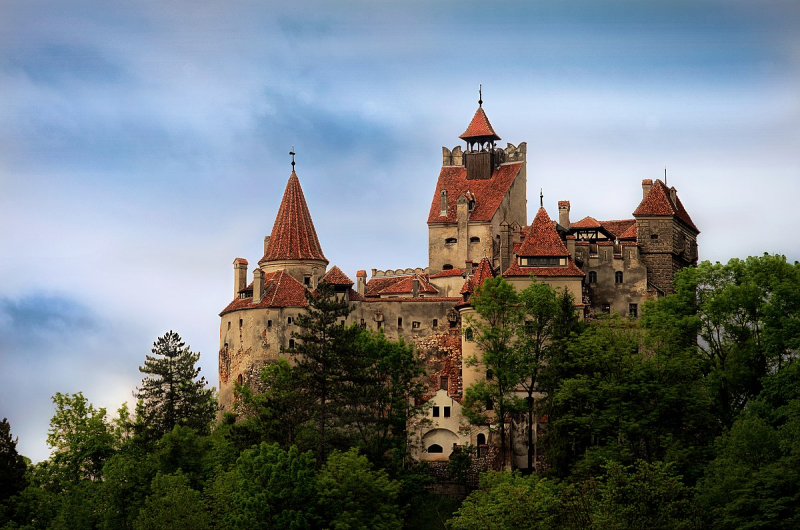
Source: brancastletours.com 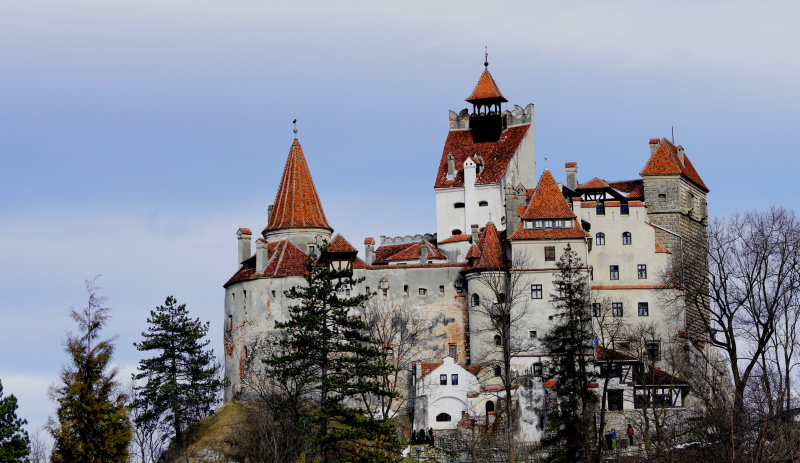
Source: brancastletours.com













